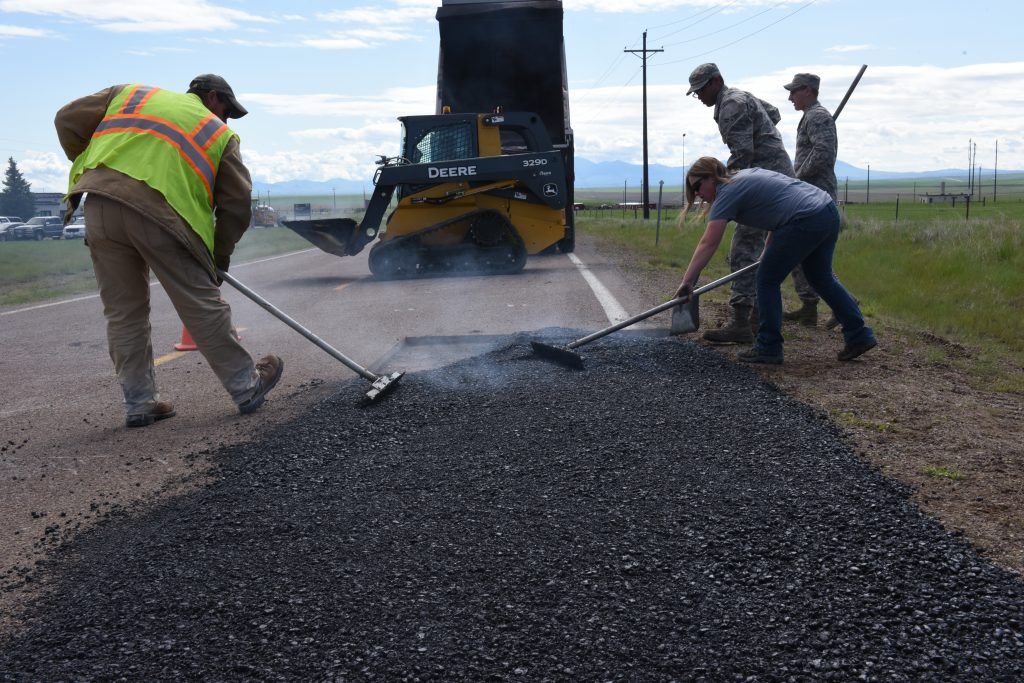Take Full Advantage Of Room Effectiveness with Hot Mix Asphalt Angled Parking Lot Solutions
Take Full Advantage Of Room Effectiveness with Hot Mix Asphalt Angled Parking Lot Solutions
Blog Article
Opening the Secrets of Hot Mix Asphalt Technology
Exploring the depths of warm mix asphalt modern technology reveals a world where meticulous processes and accurate formulations converge to shape our roads and facilities. The combination of aggregates, fillers, and binders isn't just a building and construction job but a calculated orchestration of toughness and effectiveness.
Relevance of Warm Mix Asphalt
Warm Mix Asphalt plays an important duty in modern-day facilities development due to its longevity and cost-effectiveness. As the most typically used leading material for roads, highways, and car park whole lots, Hot Mix Asphalt supplies a range of benefits that contribute to its relevance in building and construction projects.
The durability of Warm Mix Asphalt stems from its composition, which includes aggregates, binder, and filler materials that are thoroughly picked and mixed to satisfy particular efficiency demands. In general, the importance of Hot Mix Asphalt in facilities growth can not be understated, as it continues to be a foundation of contemporary construction techniques.
Components of Asphalt Mixes
The composition of asphalt mixes is composed of very carefully picked aggregates, binder, and filler products that are essential for achieving details efficiency needs. Aggregates are the key part of asphalt mixes, giving strength and stability. The binder, commonly bitumen or asphalt concrete, holds the aggregates together and offers flexibility and toughness to the mix.
The mix and percentage of these elements play a substantial role in figuring out the top quality and efficiency of the asphalt mix. Engineers meticulously make the mix to meet details demands, considering aspects like website traffic quantity, environment conditions, and sidewalk life-span. Correct selection and balancing of accumulations, binder, and fillers are vital for developing resilient, lasting asphalt pavements.
Combining and Manufacturing Strategies
:max_bytes(150000):strip_icc()/asphalt-worker-134249388-58cdf96f5f9b581d723f2f33.jpg)
When the accumulations are selected, the binder, typically asphalt concrete, is included to bind the products with each other. The binder's high quality and amount dramatically affect the mix's adaptability, strength, and resistance to environmental elements. Additionally, fillers like hydrated lime or Rose city concrete may be incorporated to enhance certain attributes of the asphalt mix, such as its workability or wetness resistance.
Throughout manufacturing, the accumulations and binder are heated, generally between 250-325 ° F(121-163 ° C ), to promote blending and ensure proper my latest blog post coating of the accumulations. The mixing process needs to be comprehensive to attain an uniform combination that advertises the wanted performance features of the asphalt. Different strategies, such as batch blending or drum mixing, are employed to achieve high-grade and constant asphalt mixes for building jobs.
Aspects Affecting Asphalt Performance
Aspects affecting asphalt efficiency incorporate an array of variables that affect the durability, longevity, and total top quality of asphalt pavements. One key element is the high quality of materials used in the asphalt mix. The type and resource of accumulations, the binder high quality, and the ingredients all play a substantial duty in identifying the efficiency of the asphalt sidewalk. The rank of accumulations is vital as it impacts the mix's stability, resistance, and workability to breaking and rutting.

Environmental conditions additionally influence asphalt efficiency. Temperature level variants, dampness infiltration, and website traffic lots can all affect the architectural stability of the pavement. Layout factors to consider, such as sidewalk density and drainage, are essential in ensuring the lasting efficiency of the asphalt pavement. By thoroughly taking into their explanation consideration these professionals, variables and engineers can optimize asphalt efficiency and improve the solution life of sidewalks.
Lasting Practices in Asphalt Technology

WMA allows for the manufacturing and positioning of asphalt blends at lower temperature levels contrasted to typical hot-mix asphalt, resulting in decreased power usage and greenhouse gas emissions. The usage of permeable asphalt blends can assist mitigate stormwater runoff issues by enabling water to penetrate with the pavement and right into the ground, advertising all-natural water purification and reenergize processes.
Conclusion
In conclusion, hot mix asphalt technology plays a crucial duty in contemporary facilities growth as a result of its sturdiness and cost-effectiveness. By meticulously balancing components, utilizing appropriate blending techniques, and considering numerous elements, engineers can develop high-grade asphalt mixes that hold up against heavy web traffic lots and rough weather conditions. Embracing sustainable methods, such as making use of warm-mix technologies and recycled products, further enhances the environmental friendliness of asphalt technology.
Blending and manufacturing techniques in warm mix asphalt innovation include the accurate combination and handling of accumulations, binder, see here and fillers to create a high-performance and resilient asphalt mix.Factors affecting asphalt efficiency encompass an array of variables that impact the resilience, long life, and overall quality of asphalt pavements. Sustainable methods in asphalt modern technology encompass different campaigns aimed at minimizing the ecological impact of asphalt production and paving procedures. By including redeemed asphalt pavement (RAP) and recycled asphalt roof shingles (RAS) right into new asphalt blends, the sector can significantly reduce the consumption of raw materials and energy, while also lowering landfill waste.
WMA allows for the production and placement of asphalt mixes at reduced temperatures contrasted to conventional hot-mix asphalt, resulting in decreased energy intake and greenhouse gas discharges.
Report this page